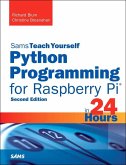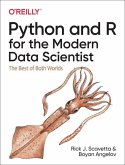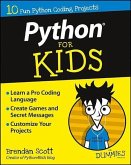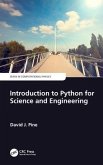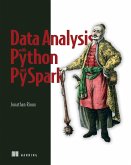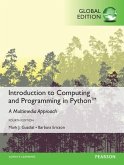According to Stack Overflow, Python has a solid claim to being the fastest-growing major programming language. (Due in some measure to the rich set of machine learning and data science libraries and frameworks available to Python coders.) Python is a widely used high-level programming language for general-purpose programming, created by Guido van Rossum and first released in 1991. An interpreted language, Python has a design philosophy that emphasizes code readability (notably using whitespace indentation to delimit code blocks rather than curly brackets or keywords), and a syntax that allows programmers to express concepts in fewer lines of code than might be used in languages such as C++ or Java. It provides constructs that enable clear programming on both small and large scales. Python is a multi-paradigm programming language. Object-oriented programming and structured programming are fully supported, and many of its features support functional programming and aspect-oriented programming. Rather than having all of its functionality built into its core, Python was designed to be highly extensible. This text is intended for a second course on Python, to enable students who have a basic understanding of Python to take their programming skills to the next level. Areas covered include: writing for run-time efficiency; lambda functions and when to use them; versioning issues; understanding Unicode and localization; regular expressions; binary operators and how to use them; converting between radixes; complete rules for every aspect of data formatting; creating, building, and importing packages; using the Django web-development package; graphics programming; fine points of object orientation with "magic methods”; and reading and writing binary files. * Breaks advanced topics down to their essentials, illustrating them with simple examples and practical exercises * Covers runtime efficiency, lambda functions, regex, binary operators, advanced data formatting, packages, Django, graphics, magic methods, binary files, and more * Deepens your insight by illuminating design decisions and tricks behind each language feature * Includes challenging projects to showcase Python's power * Instructors can access additional examples, exercises, and resources All you need to learn advanced Python programming -- patiently explained and clearly illustrated with simple examples * Picks up where Brian Overland's Python Without Fear left off, covering more advanced topics and practices * Breaks advanced topics down to their essentials, illustrating them with simple examples and practical exercises * Covers runtime efficiency, lambda functions, regex, binary operators, advanced data formatting, packages, Django, graphics, magic methods, binary files, and more * Deepens your insight by illuminating design decisions and tricks behind each language feature * Includes challenging projects to showcase Python's power * Instructors can access additional examples, exercises, and resources


